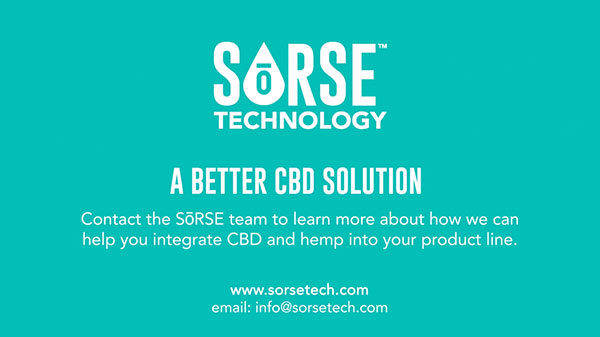Let’s be honest. Many cannabis-infused products, both CBD and THC, taste awful. The reason why is simple: cannabinoid extracts are intensely bitter, earthy, and difficult to work with, owing respectively to the cannabinoids themselves, terpenes, flavonoids, and the complex interactions between them and other ingredients.
When the plant material impacts the flavor profile so intensely, formulating infused foods and beverages is a huge challenge. In the past, consumers bought products for their effects, not for their taste – but now consumers are looking for great-tasting, effective products. Companies that can offer both efficacy and great taste will have an enduring market advantage.
In most emulsified cannabinoid products, carrier oils, preservatives, and surfactants intensify the bitterness. When cannabinoids are broken down into small particles for an emulsion, that creates more surface area for the bitter compounds to interact with the taste receptors. Fortunately, SōRSE emulsion allows for masking any bitter flavors with minimal sugars and additives.
Increasing the concentration of cannabinoids increases the bitterness, a particularly challenging issue for product formulators trying to create tasty CBD-infused products.
WHAT HAVE WE DONE TO FIX IT?
Options for dealing with bitterness fall into two main categories: incorporation or masking, which can be thought of as either going with the flow, or fighting it.
Incorporating the Flavors of Cannabinoids
Incorporation means accepting the naturally bitter, complex flavor of cannabis and working with it rather than trying to hide it. It means thinking of the flavor of the extract as an ingredient in the overall sensory formulation. Generally, we experience sweet, sour, salty, and umami tastes positively; however, bitterness is a component in many pleasant tastes.
Flavors that are naturally bitter, such as peppermint, chocolate, coffee, citrus, or beer, trick the brain into incorporating the bitterness into the familiar flavor, such that it doesn’t register as bitter, but acknowledges it as “peppermint, which is a little bitter.”
Many cannabinoids are bitter, and customers can accept that bitterness is the cost they pay for the effect, or even celebrate and cultivate it, much as we do with caffeine or alcohol.
The trouble with this approach is it limits flavor options. The market is laden with chocolates, sour candies, and peppermint mouth sprays. The industry needs to evolve and match the sophistication of today’s consumers with flavors that appeal to them.
Masking the Flavors of Cannabinoids
Masking is a more traditional, low-tech option that works similarly to incorporation but has the goal of completely erasing the taste of the cannabinoids rather than complementing them. The modern version involves bitter blockers as a process aid, which interfere with the taste buds’ ability to perceive bitterness.
Even though we can eliminate the herbaceous, bitter taste of cannabis, should we? Some people argue that cannabis shouldn’t taste good because its bitterness will make people think of it as medicine, or that without the distinctive taste, accidental ingestion will happen. The fact is, most consumers know their limits, and are looking for other means of recreational or medicinal consumption beyond inhalation. In turn, companies have responded to the growing demand for high-quality infused food and beverages, and are creating products that taste great and deliver cannabinoids efficaciously.
If you are a product developer who has an idea for a great infused product and would like some advice working with the flavor of cannabinoids and terpenes, our R&D team is here to help. They are well-versed in all aspects of product development, from ideation to scale, and are experts when it comes to working with the flavors that cannabinoids offer. Book a call today!





